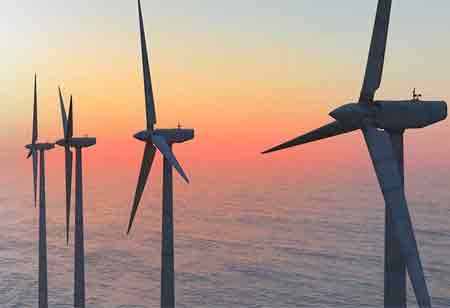Thank you for Subscribing to Energy Business Review Weekly Brief
How Edge Technology is Reshaping the Energy Landscape
In the dynamic arena of electricity generation, the reliance on data-driven decision-making has intensified, marking a significant shift towards digital transformation within an industry characterized by its complexity and high stakes.

By
Energy Business Review | Thursday, December 19, 2024
Stay ahead of the industry with exclusive feature stories on the top companies, expert insights and the latest news delivered straight to your inbox. Subscribe today.
The latest technologies in power generation utilize advanced-edge solutions to improve sustainability, return on investment, and reliability.
Fremont, CA: In the dynamic arena of electricity generation, the reliance on data-driven decision-making has intensified, marking a significant shift towards digital transformation within an industry characterized by its complexity and high stakes. While profoundly challenging, this transition presents substantial opportunities akin to mastering the nuances of riding a colossal surf wave. As a sector fundamental to everyday life, the energy industry faces unique obstacles, such as costly outages and operational inefficiencies. Despite the utility of traditional manual processes, considerable scope exists for optimization.
In high-stakes fields like electricity generation, data-centric strategies are paramount. However, designing innovative technologies that effectively facilitate informed decision-making remains formidable. Electricity generation stands out as one of the most intricate sectors embracing digital evolution, necessitating a nuanced approach akin to navigating a significant surf swell—a complex challenge with the potential for transformative rewards.
Enhancing Grid Intelligence
Central to daily operations, the energy sector encounters specific challenges, particularly regarding downtime, which poses significant financial risks. Although power generation companies have traditionally relied on manual processes and redundancy measures to mitigate downtime, opportunities remain for further refinement.
Consequently, developing smart grids—anchored in edge data, analytics, and enhanced connectivity—is critical. Integrating microgeneration sites utilizing renewable sources, such as solar and wind, reshapes the energy landscape. These sites contribute power directly at the point of consumption, complicating the integration of their intermittent energy outputs with variable network demand.
Synchronizing Generation and Consumption
Tightly coupling supply with demand in real time is another pivotal power management challenge. Once generated, electricity must be immediately utilized; there is no alternative for storage in its immediate frame of reference. Power operators must synchronize generation with the fluctuating consumption patterns of millions of residential, commercial, and industrial users, necessitating precise timing and forecasting.
Furthermore, not all deployments of edge technologies yield equivalent results, as the digital transformation reshapes power generation. Successfully achieving this requires technical proficiency and a deep understanding of the diverse needs inherent within the electricity infrastructure.
Towards a Sustainable Edge
Sustainability initiatives have emerged as a central focus for power generation firms striving to comply with regulations, maintain customer trust, and protect the environment. Organizations are increasingly leveraging edge data to guide sustainability strategies, thereby forging a path toward a greener future.
Realizing sustainability objectives necessitates robust measurement, verification, and reporting mechanisms for carbon tracking and related applications. The analytics enabled by this approach provide critical insights that can significantly enhance decision-making processes. When systematically integrated, this paradigm can revolutionize the complex landscape of power generation, fostering improvements in sustainability, return on investment, and operational reliability.






